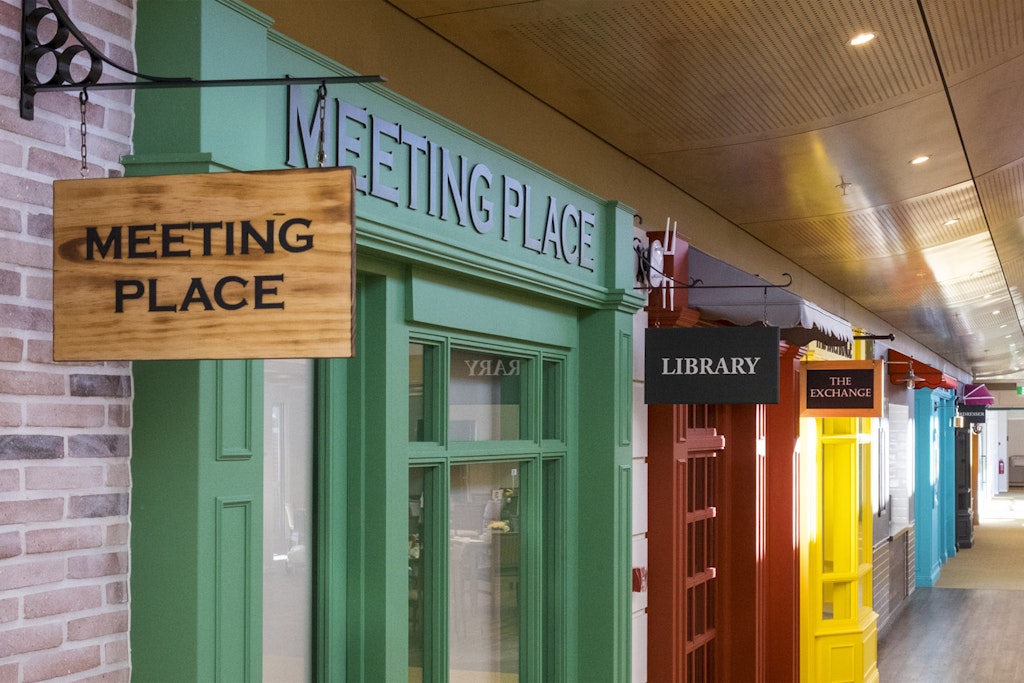Improving residents’ lives through good interior design
Last updated on 23 November 2022

SPONSORED – With so many aged care changes around quality, safety and consumer choice coming into play in the industry, providers should not forget about the benefits of a well-designed aged care facility. New build or refurb, seriously considering the interior design of your nursing home benefits the health and wellbeing of residents.
The Aged Care Quality Standards state that quality aged care needs to be delivered in an environment that is “welcoming for all consumers and encourages a sense of belonging”, which is where engaging an interior design expert can make all the difference.
Gilmore Interior Design, an award-winning specialist aged care interior design studio in Sydney, is bringing nursing homes into the new decade and ensuring facilities are homes, not institutions.
Positive impact
A well-designed home can have a positive impact on residents and flow-on effects into different facets of your facility operation, explained Jennifer Gilmore, Managing Director of Gilmore Interior Design.
“The environment we live in affects every individual, but particularly as people age, they need their environment to be able to support them to enable them to live a healthy and full life,” said Ms Gilmore.
“Ultimately, it is about respect and dignity and recognising that their lives have value.
“I enjoy that the designs we produce do have an impact in a positive way on the people that inhabit the spaces.”
Providers can create completely different spaces in their facilities through interior design, for example through space planning, better use of colours and finishes, and easy access to nature and natural light.
Ms Gilmore explained that her studio works with providers from start to finish of a design project, including the briefing stage, concept design, construction, and interior styling.
Benefits of good interior design in aged care can include:
- Safe and welcoming environments for residents
- Reducing aggression or behaviours of concern in residents, and increasing happiness and spirit
- Enabling independence and purpose among residents
- Increased socialisation, connection and communication between family, friends, and staff in common areas
- Encouraging families to visit their older loved ones more often
Ms Gilmore adds that a well-designed aged care home also has a positive impact on your workforce.
“Good interior design enables independence and purpose which is important in the cognitive wellbeing of residents, staff and family. The wellbeing of staff is equally important since the sector demands a lot from staff on every level,” she said.
Other benefits include improvements in your aged care facility standing and image, and attracting more clients due to the improved visual environment of your home.
Tangible benefit
The interior design undertaken by Gilmore at Anglicare’s Dudley Foord House in The Ponds, New South Wales, have had a very obvious and tangible effect on its aged care residents.
Cathy Wood, General Manager – Customer Engagement at Anglicare, said the mixture of space and light, coupled with warm interiors, resulted in their home being easier to manage as their residents instantly relaxed when they enter the “Main Street” of the facility – which includes an indoor shopfronts common area for resident services like hairdressers or the library.
“Residents instantly connected to the familiar sight of shop fronts along the Main Street and the furniture layout meant residents could promenade in front of the shops at their leisure,” said Ms Wood.
“Every lunch and dinner, we would welcome a couple of family members who joined their relatives for meals in the Main Street dining area. I believe this was because the dining area was so relaxing, due to the incredible height of the ceiling and the natural light.
“I have never seen such a willingness on behalf of families to spend time with their loved ones, throughout all times of the day.”
Every resident bedroom entry in the facility has different coloured doors, now a hallmark of Anglicare residential care homes, which was a simple dementia design principle that supported independence and enhanced wayfinding for people living with dementia.
Additionally, the facility saw a reduction in resident aggression as a result of the natural lighting, outdoor spaces, and freedom to move about the facility with ease.
Ms Wood explained that they moved 48 residents from an older style home – which had limited dining areas and access to gardens, small lounge areas and not much natural light – into Dudley Foord House, and the organisation saw the number of recordable aggressive episodes decline from three cases per month, to no recordable episodes in the first five months of operation and only three recordable episodes in the first ten months.
“This is a tangible benefit to the physical and mental wellbeing of these residents, as well as staff,” explained Ms Wood.
Ms Gilmore said that if you are reviewing how your aged care spaces benefit the wellbeing of your residents, it’s important to know whether the residents are enjoying the spaces within your facility, and there is an easy way to figure this out.
“A test of a well-designed facility is whether the spaces are being used. It is an indicator of whether the space is suitable to the residents needs and whether they feel comfortable in that environment,” explained Ms Gilmore.
“We have some lovely anecdotes from facilities when common areas such as dining areas are refurbished, the residents tend to dress up and they are more willing to leave their bedrooms.”
And ultimately, residents leaving their rooms more often and wanting to socialise with others in spaces they enjoy being in benefits their wellbeing and mental health.
To find out more about Gilmore Interior Design and their award-winning designs for aged care and retirement living, head to their website.